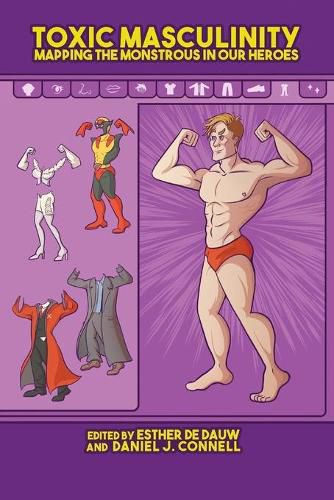Readings Newsletter
Become a Readings Member to make your shopping experience even easier.
Sign in or sign up for free!
You’re not far away from qualifying for FREE standard shipping within Australia
You’ve qualified for FREE standard shipping within Australia
The cart is loading…






This title is printed to order. This book may have been self-published. If so, we cannot guarantee the quality of the content. In the main most books will have gone through the editing process however some may not. We therefore suggest that you be aware of this before ordering this book. If in doubt check either the author or publisher’s details as we are unable to accept any returns unless they are faulty. Please contact us if you have any questions.
The superhero permeates popular culture from comic books to film and television to internet memes, merchandise, and street art. Toxic Masculinity:asks what kind of men these heroes are and if they are worthy of the unbalanced amount of attention. Contributors to the volume investigate how the (super)hero in popular culture conveys messages about heroism and masculinity, considering the social implications of this narrative within a cultural (re)production of dominant, hegemonic values and the possibility of subaltern ideas, norms, and values to be imagined within that (re)production.
Divided into three sections, the volume takes an interdisciplinary approach, positioning the impact of hypermasculinity on toxic masculinity and the vilification of other identities through such mediums as film, TV, and print comic book literature. The first part, Understanding Super Men , analyzes hegemonic masculinity and the spectrum of hypermasculinity through comics, television, and film, while the second part, The Monstrous Other , focuses on queer identity and femininity in these same mediums. The final section, Strategies of Resistance , offers criticism and solutions to the existing lack of diversity through targeted studies on the performance of gender. Ultimately, the volume identifies the ways in which superhero narratives have promulgated and glorified toxic masculinity and offers alternative strategies to consider how characters can resist the hegemonic model and productively demonstrate new masculinities.
With contributions by Daniel J. Connell, Esther De Dauw, Craig Haslop, Drew Murphy, Richard Reynolds, Janne Salminen, Karen Sugrue, and James C. Taylor.
$9.00 standard shipping within Australia
FREE standard shipping within Australia for orders over $100.00
Express & International shipping calculated at checkout
This title is printed to order. This book may have been self-published. If so, we cannot guarantee the quality of the content. In the main most books will have gone through the editing process however some may not. We therefore suggest that you be aware of this before ordering this book. If in doubt check either the author or publisher’s details as we are unable to accept any returns unless they are faulty. Please contact us if you have any questions.
The superhero permeates popular culture from comic books to film and television to internet memes, merchandise, and street art. Toxic Masculinity:asks what kind of men these heroes are and if they are worthy of the unbalanced amount of attention. Contributors to the volume investigate how the (super)hero in popular culture conveys messages about heroism and masculinity, considering the social implications of this narrative within a cultural (re)production of dominant, hegemonic values and the possibility of subaltern ideas, norms, and values to be imagined within that (re)production.
Divided into three sections, the volume takes an interdisciplinary approach, positioning the impact of hypermasculinity on toxic masculinity and the vilification of other identities through such mediums as film, TV, and print comic book literature. The first part, Understanding Super Men , analyzes hegemonic masculinity and the spectrum of hypermasculinity through comics, television, and film, while the second part, The Monstrous Other , focuses on queer identity and femininity in these same mediums. The final section, Strategies of Resistance , offers criticism and solutions to the existing lack of diversity through targeted studies on the performance of gender. Ultimately, the volume identifies the ways in which superhero narratives have promulgated and glorified toxic masculinity and offers alternative strategies to consider how characters can resist the hegemonic model and productively demonstrate new masculinities.
With contributions by Daniel J. Connell, Esther De Dauw, Craig Haslop, Drew Murphy, Richard Reynolds, Janne Salminen, Karen Sugrue, and James C. Taylor.